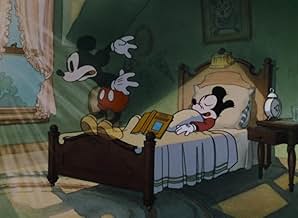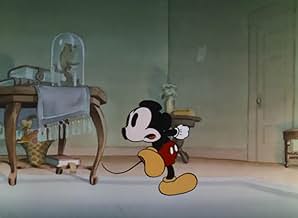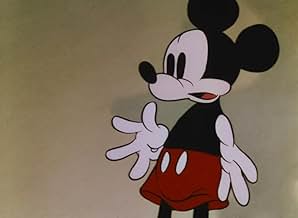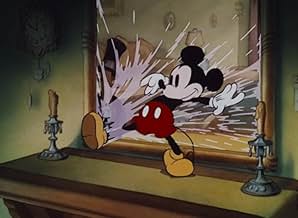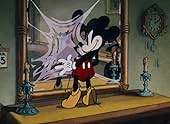अपनी भाषा में प्लॉट जोड़ेंMickey has been reading Lewis Carroll's "Through the Looking-Glass, and What Alice Found There", and falls asleep. He finds himself on the other side of the mirror, where the furniture is al... सभी पढ़ेंMickey has been reading Lewis Carroll's "Through the Looking-Glass, and What Alice Found There", and falls asleep. He finds himself on the other side of the mirror, where the furniture is alive. He eats a walnut, which makes him briefly larger, then small. He dances around a lot,... सभी पढ़ेंMickey has been reading Lewis Carroll's "Through the Looking-Glass, and What Alice Found There", and falls asleep. He finds himself on the other side of the mirror, where the furniture is alive. He eats a walnut, which makes him briefly larger, then small. He dances around a lot, ultimately doing a major number with a deck of cards. He dances with the queen, making th... सभी पढ़ें
- Radio Hiccup
- (वॉइस)
- Mickey Mouse
- (वॉइस)
- (बिना क्रेडिट के)
फ़ीचर्ड समीक्षाएं
There are many references to Alice in Wonderland of course, some subtle, some obvious and some intelligent. Though it's all great fun and wildly imaginative. It's these sort of cartoons that made Disney Studios and Mickey Mouse legendary.
In a way, it's the success of cartoon like this that are to blame for the existence of stuff like The Haunted Mansion.
But that's just the pessimist in me.
The title and the book-within-the-book explicitly cite Carroll's sequel "Through the Looking Glass," but all of the deck of cards business is from the original "Alice's Adventures in Wonderland." Specific references to the Alice books include the narrative being framed as a dream, Mickey going through the mirror, his growing bigger and smaller from eating, anthropomorphic creatures (although often quite different ones here than in the books), clock and spiral motifs and the cards, as well as Mickey's and the proceeding's generally playful demeanor. There are even a couple puns made of Mickey's exclamations of "nuts" and "skip it," as well as the "calling all cards." There's some tap dancing, including on a top hat, as Fred Astaire and Ginger Rogers had recently starred in "Top Hat" (1935), I guess, to compliment the parodying of Busby Berkeley musicals, swashbucklers and war films. The Queen of Hearts somewhat looks like Greta Garbo, perhaps from "Queen Christina" (1933), while the King bears a passing resemblance to Charles Laughton from "The Private Life of Henry VIII" (1933). The Technicolor looks good, too, and there's a nice sound bridge made of the anthropomorphic phone ringing within the mirror dream and the alarm clock going off on the other side. It's a clever and well-constructed cartoon.
क्या आपको पता है
- ट्रिवियाThis short is featured as a playable level in the video game Epic Mickey (2010).
- गूफ़There is a series of scratches visible throughout, apparently from the platten glass used to hold the artwork under the camera.
- भाव
King of Hearts: [top half] Call out the cards!
King of Hearts: [bottom half] Call out the cards!
King of Hearts: [both halves] Call out the cards! Call out the cards!
Radio: [repeatedly] Calling all cards. Calling all cards.
- कनेक्शनEdited into The Mickey Mouse Anniversary Show (1968)
टॉप पसंद
विवरण
- चलने की अवधि9 मिनट
- पक्ष अनुपात
- 1.37 : 1
इस पेज में योगदान दें



